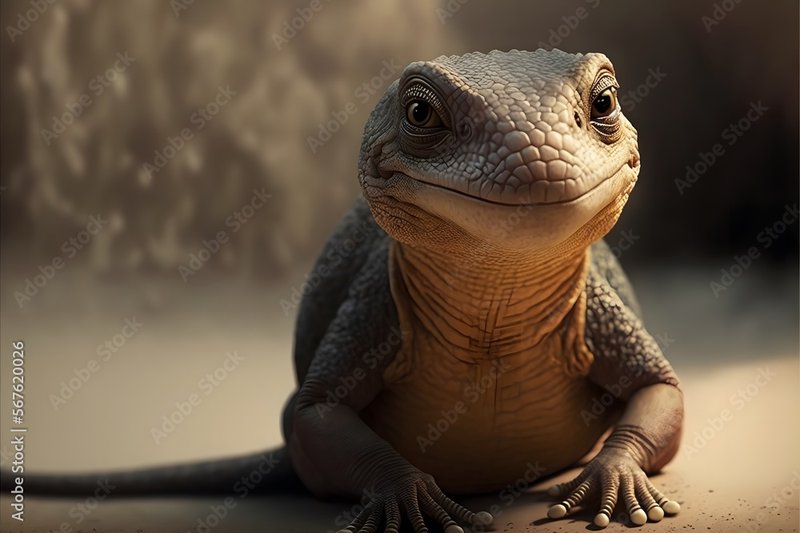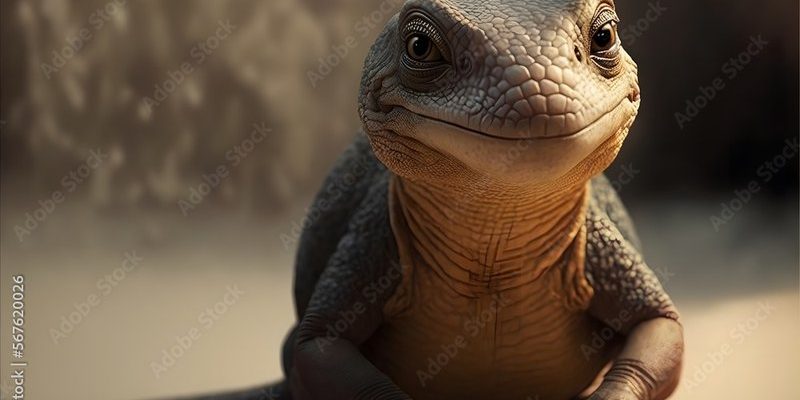
These reptiles belong to the *Varanus* genus, and you’ll find them in diverse habitats around the world—from lush rainforests to arid deserts. Their adaptability and cunning hunting techniques make them some of the most effective predators in their environments. So, let’s dive into the fascinating journey of monitor lizards through time, unraveling the details you might not have known while enjoying our metaphorical cup of coffee.
What Are Monitor Lizards?
Monitor lizards are part of the *Varanidae* family, which includes around 80 species. These lizards can vary greatly in size, from the small *Varanus brevicauda* to the massive *Varanus komodoensis*, also known as the Komodo dragon. These reptiles are known for their long necks, powerful limbs, and sharp claws—traits that make them excellent hunters. They can be found in Africa, Asia, Australia, and even some islands in the Pacific.
What sets monitor lizards apart from other lizards is their unique behavior and adaptability. They are highly intelligent, using problem-solving skills to hunt and escape predators. They can also be quite social, often engaging in complex interactions with one another. If you’ve ever seen a monitor lizard basking in the sun or scavenging for food, you’ve witnessed their natural instinct in action.
The Early Ancestors of Monitor Lizards
The story of monitor lizards dates back to the Late Cretaceous period, around 70 million years ago. During this time, the *Varanidae* family was beginning to emerge, with early ancestors resembling today’s monitor lizards starting to take shape. The fossil records suggest that these early reptiles adapted to various environments, laying the groundwork for the diversity we see today.
Many lizard families began developing around this time, but monitor lizards took a unique evolutionary path. They evolved from a group of *Lacertilia*, which are the common lizards we see today, but diverged due to their specific adaptations. These adaptations included better hunting techniques and enhanced senses, which allowed them to thrive in different ecosystems.
You might be wondering how scientists know about these ancient creatures. Well, paleontologists have discovered fossils that help piece together the story of monitor lizard evolution. By studying these remains, they’ve been able to trace the development of various characteristics that define this fascinating family of reptiles.
The Age of Monitors: Evolutionary Changes
Fast forward to the Eocene epoch, around 55 million years ago, and monitor lizards were becoming more defined. During this period, significant evolutionary changes took place, reflecting adaptations to their environments. Their body structure became more elongated, and their limbs became stronger, allowing them to climb trees and run faster.
Interestingly, this is also when monitor lizards began to develop their distinct hunting methods. They evolved into opportunistic feeders, which means they could hunt a wide variety of prey. From small mammals to birds, these lizards adapted their diet based on what was available, making them versatile predators. This adaptability is one of the reasons they have survived for millions of years.
As continents drifted and climates changed, monitor lizards spread across the globe. They colonized new territories, leading to speciation—where one species gradually diverges into two or more distinct species. This geographic separation helped create the incredible diversity we see in monitor lizards today.
How Monitor Lizards Adapted to Their Environments
You might be surprised to learn about the various adaptations that monitor lizards have developed over time. Their physical features and behaviors are finely tuned to help them survive in their specific environments. For instance, many species have excellent climbing abilities, thanks to their powerful limbs and sharp claws. This helps them escape predators and hunt for birds or eggs.
In arid environments, some monitor lizards have adapted to burrowing. They dig into the ground to stay cool during the hot days and emerge at night to hunt. Others, like the *Varanus salvator*, are excellent swimmers, utilizing their tail and streamlined body to navigate through water efficiently.
Their keen sense of smell plays a vital role in hunting and communication. Using their forked tongues, monitor lizards can detect scents in the air and on the ground. This acute sense of smell is crucial for locating prey and finding mates. It’s like having a built-in GPS for food, which is pretty impressive for a reptile!
Monitor Lizards in Today’s World
Today, monitor lizards are more than just fascinating creatures; they play an essential role in their ecosystems. As apex predators, they help control populations of smaller animals, keeping ecosystems in balance. You’ll find them in rainforests, deserts, and even urban areas, showcasing their ability to adapt to human-influenced environments.
Unfortunately, not all monitor lizard species are thriving. Habitat destruction, hunting, and climate change are significant threats to their survival. Conservation efforts are crucial to ensure that these remarkable reptiles continue to thrive. Many organizations are working to protect their habitats and educate people about the importance of these lizards in biodiversity.
Let’s not forget their unique place in human culture, too. In many societies, monitor lizards are symbols of power and survival. Their impressive hunting skills and adaptability have made them subjects of folklore and fascination throughout history.
The evolutionary history of monitor lizards is a remarkable tale of adaptation, resilience, and survival. From their ancient ancestors in the Cretaceous period to their modern-day descendants, these reptiles have proven themselves to be incredibly versatile and dynamic. As they continue to thrive in various environments, they remind us of the beauty and complexity of nature.
Understanding the evolutionary journey of monitor lizards helps us appreciate their role in the ecosystem and the importance of preserving their habitats. As we explore the world around us, let’s celebrate these unique creatures and advocate for their protection. After all, every species has a story to tell, and monitor lizards have one that has spanned millions of years.

